EMS
-
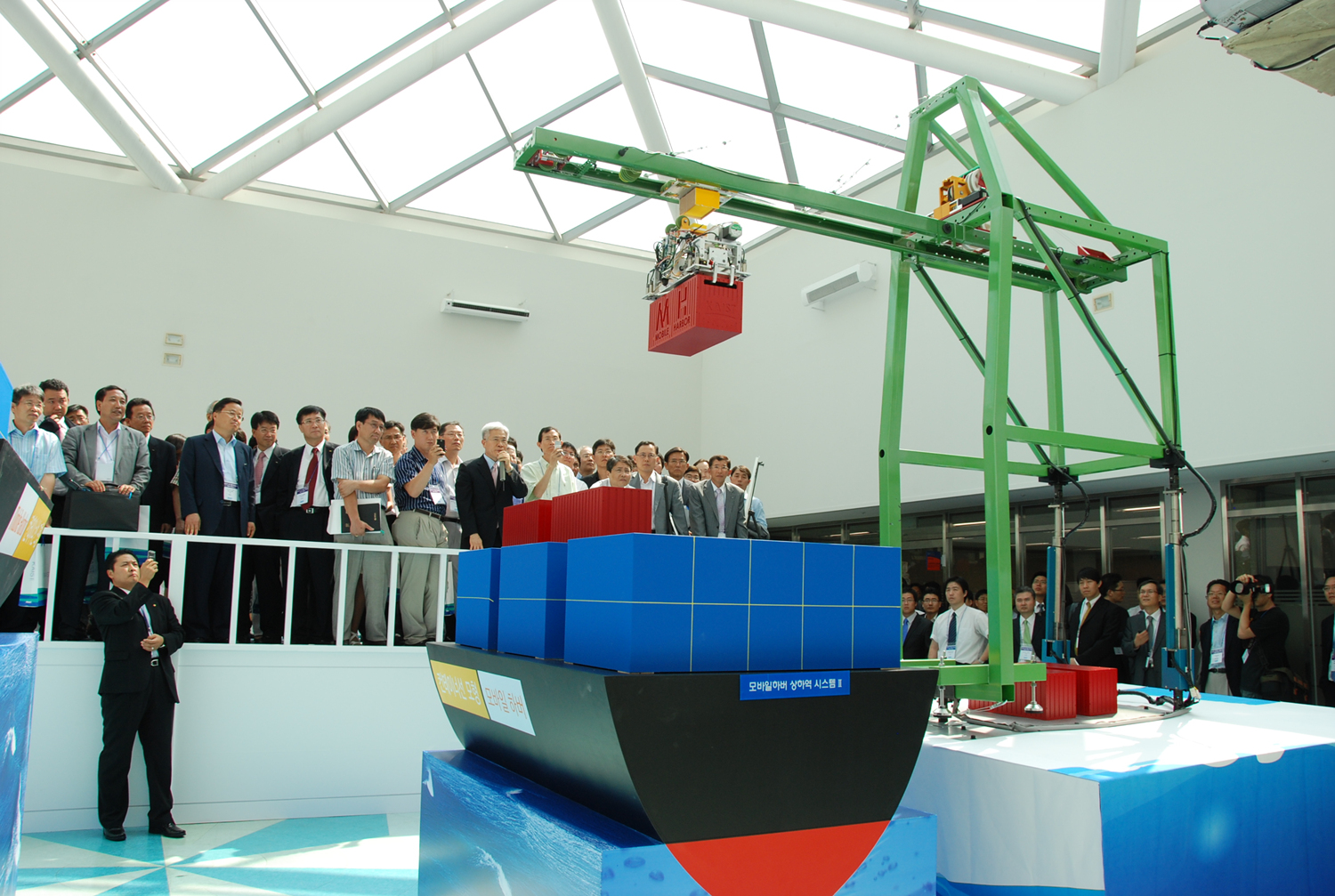 KAIST's Mobile Harbor Program Attracts Two Corporate Investments
KAIST-developed Mobile Harbor Program has attracted investments from Korea"s two big-name industrial corporations, university authorities said on Monday (Oct. 19).
KAIST has recently signed an agreement with Hyundai Wia Corp., a machine parts supplier, to collaborate in the researches of the mobile harbor programs and commercialization. Under the agreement, Hyundai WIA will invest a total of 7.5 billion won in the program for two years starting from January 2010.
KAIST has also received a letter of intent from the Daewoo Shipbuilding & Marine Engineering Co. on investing 20 billion won in the commercialization of the project.
The Mobile Harbor Program is designed to create mobile units that can go out to the ship which are anchored off-shore and unload the cargo and take it to where it is needed. It is aimed at overcoming the shortcomings of the current maritime container transportation systems. Container ships are getting larger and larger, requiring deep waters, large and complex loading and unloading systems, and major investments in facilities.
Prof. Byung-Man Kwak, leader of the program"s R&D team, said: "With the investment from two global industrial companies, the program has gained a crucial momentum. The development of the program is expected to help Korea to become a global leader in marine transportation and maintain its supremacy in shipbuilding."
2009.10.20 View 15907
KAIST's Mobile Harbor Program Attracts Two Corporate Investments
KAIST-developed Mobile Harbor Program has attracted investments from Korea"s two big-name industrial corporations, university authorities said on Monday (Oct. 19).
KAIST has recently signed an agreement with Hyundai Wia Corp., a machine parts supplier, to collaborate in the researches of the mobile harbor programs and commercialization. Under the agreement, Hyundai WIA will invest a total of 7.5 billion won in the program for two years starting from January 2010.
KAIST has also received a letter of intent from the Daewoo Shipbuilding & Marine Engineering Co. on investing 20 billion won in the commercialization of the project.
The Mobile Harbor Program is designed to create mobile units that can go out to the ship which are anchored off-shore and unload the cargo and take it to where it is needed. It is aimed at overcoming the shortcomings of the current maritime container transportation systems. Container ships are getting larger and larger, requiring deep waters, large and complex loading and unloading systems, and major investments in facilities.
Prof. Byung-Man Kwak, leader of the program"s R&D team, said: "With the investment from two global industrial companies, the program has gained a crucial momentum. The development of the program is expected to help Korea to become a global leader in marine transportation and maintain its supremacy in shipbuilding."
2009.10.20 View 15907 -
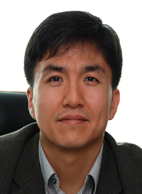 Prof. Cho Elected Editor-in-Chief of Systems Biology
Prof. Kwang-Hyun Cho of Department of Bio and Brain Engineering at KAIST has been recently elected editor-in-chief of the Systems Biology, an international journal published by the London-based Institution of Engineering and Technology (IET), the university authorities said on Wednesday (Sept. 23)
By the year 2012, Cho will oversee the editorial process of the journal covering intra- and inter-cellular dynamics, using systems- and signal-oriented approaches. IET, one of the world"s leading professional societies for the engineering and technology community, has a worldwide membership of more than 150,000.
Prof. Cho"s research interests cover the areas of systems science with bio-medical applications including systems biology and bio-inspired engineering based on molecular systems biology. He is currently an editorial board member of Systems and Synthetic Biology (Springer, Netherlands, from 2006), BMC Systems Biology (BMC, London, U.K., from 2007), Gene Regulation and Systems Biology (Libertas Academica, New Zealand, from 2007), and Bulletin of Mathematical Biology (Springer, New York, from 2008), and an editorial advisory board member of Molecular BioSystems (The Royal Society of Chemistry, U.K.).
2009.09.24 View 16313
Prof. Cho Elected Editor-in-Chief of Systems Biology
Prof. Kwang-Hyun Cho of Department of Bio and Brain Engineering at KAIST has been recently elected editor-in-chief of the Systems Biology, an international journal published by the London-based Institution of Engineering and Technology (IET), the university authorities said on Wednesday (Sept. 23)
By the year 2012, Cho will oversee the editorial process of the journal covering intra- and inter-cellular dynamics, using systems- and signal-oriented approaches. IET, one of the world"s leading professional societies for the engineering and technology community, has a worldwide membership of more than 150,000.
Prof. Cho"s research interests cover the areas of systems science with bio-medical applications including systems biology and bio-inspired engineering based on molecular systems biology. He is currently an editorial board member of Systems and Synthetic Biology (Springer, Netherlands, from 2006), BMC Systems Biology (BMC, London, U.K., from 2007), Gene Regulation and Systems Biology (Libertas Academica, New Zealand, from 2007), and Bulletin of Mathematical Biology (Springer, New York, from 2008), and an editorial advisory board member of Molecular BioSystems (The Royal Society of Chemistry, U.K.).
2009.09.24 View 16313 -
 KAIST's OLEV Best Model of Creative Growth Engine
Various models of electric vehicles designed to replace the internal combustion automobiles face significant problems as they invariably failed to overcome the limitations involving lithium battery in terms of power capacity, weight, raw materal price, recharging time and preparation of charging stations. Worst of all, the limited supply of lithium will eventually raise its price sky high when all cars use lithium batteries, and the economic value of electric cars will be lost.
KAIST"s online electric vehicle project (OLEV) seeks to resolve these fundamental problems involving electric vehicles that have so far been developed. KAIST OLEV, a project to develop a new growth engine for the nation and lead the future of global automotive industry, is an entirely new concept: the electric vehicle picks up power from underground power supplier lines through the non-contact magnetic charging method, while either running or standing. This is the first eco-friendly and economic automotive system that can resolve the problems inherent to previously-developed electric vehicles, according to the KAIST OLEV Project Center.
In February 2009, KAIST researchers first proved that up to 80 percent power conveyance is possible through a gap of 1 centimeter from the power line, and in July they successfully supplied power to a bus -- up to 60 percent across a 12 cm gap from the power line embedded in the ground -- using power supply and pick-up devices they developed. In this process, KAIST has secured the core technologies for maximizing power efficiency and minimizing the cost of installing the non-contact power supply system. KAIST has established the Online Electric Vehicle Co., Ltd., to undertake business activities related to the OLEV project, including the IPR on power supply and pick-up devices, parts and accessories and commercial promotion. A demonstration event is scheduled for Aug. 13, Thursday.
The impact of the development of the OLEV technology on the energy and environment issues and the overall economy will be enormous. In case a half of the total automobiles running in Korea, or 6 million vehicles, are replaced with OLEV, electric power produced by just two of the nation"s atomic power plants will be enough to operate them all, and the nation will be able to reduce crude oil import by 35 million barrels worth U.S.$3 billion a year (supposing $80 per barrel).
Korea"s export of OLEV units will in the future surpass the present level of overseas sale of conventional cars. When nations use online electric vehicles in large numbers, their demand for CO2-free power plants will grow. Korea has cutting-edge technology in the construction of atomic power plants. As a world leader in the area of nuclear power plant, Korea will enjoy new opportunities to contribute to the global advancement of atomic power generation as well as transportation industries.
Korea still shares a small portion of the world"s automobile market estimated to worth some 2,000 trillion Korean won. But commercialization of the OLEV technology worldwide will greatly enhance Korea"s global automotive market share. Successful development of the online electric vehicle requires preemptive investment and positive support by the government for the ultimate purpose of resolving energy and environment problems.
If and when domestic enterprises secure technological supremacy in the next generation automobile market with their online electric vehicles which will replace the 100-year-old combustion engine, it will be the most desirable shortcut to raising Korea"s international competitiveness. OLEV promises to be the model of creative growth engine in the 21st century.
2009.07.30 View 17154
KAIST's OLEV Best Model of Creative Growth Engine
Various models of electric vehicles designed to replace the internal combustion automobiles face significant problems as they invariably failed to overcome the limitations involving lithium battery in terms of power capacity, weight, raw materal price, recharging time and preparation of charging stations. Worst of all, the limited supply of lithium will eventually raise its price sky high when all cars use lithium batteries, and the economic value of electric cars will be lost.
KAIST"s online electric vehicle project (OLEV) seeks to resolve these fundamental problems involving electric vehicles that have so far been developed. KAIST OLEV, a project to develop a new growth engine for the nation and lead the future of global automotive industry, is an entirely new concept: the electric vehicle picks up power from underground power supplier lines through the non-contact magnetic charging method, while either running or standing. This is the first eco-friendly and economic automotive system that can resolve the problems inherent to previously-developed electric vehicles, according to the KAIST OLEV Project Center.
In February 2009, KAIST researchers first proved that up to 80 percent power conveyance is possible through a gap of 1 centimeter from the power line, and in July they successfully supplied power to a bus -- up to 60 percent across a 12 cm gap from the power line embedded in the ground -- using power supply and pick-up devices they developed. In this process, KAIST has secured the core technologies for maximizing power efficiency and minimizing the cost of installing the non-contact power supply system. KAIST has established the Online Electric Vehicle Co., Ltd., to undertake business activities related to the OLEV project, including the IPR on power supply and pick-up devices, parts and accessories and commercial promotion. A demonstration event is scheduled for Aug. 13, Thursday.
The impact of the development of the OLEV technology on the energy and environment issues and the overall economy will be enormous. In case a half of the total automobiles running in Korea, or 6 million vehicles, are replaced with OLEV, electric power produced by just two of the nation"s atomic power plants will be enough to operate them all, and the nation will be able to reduce crude oil import by 35 million barrels worth U.S.$3 billion a year (supposing $80 per barrel).
Korea"s export of OLEV units will in the future surpass the present level of overseas sale of conventional cars. When nations use online electric vehicles in large numbers, their demand for CO2-free power plants will grow. Korea has cutting-edge technology in the construction of atomic power plants. As a world leader in the area of nuclear power plant, Korea will enjoy new opportunities to contribute to the global advancement of atomic power generation as well as transportation industries.
Korea still shares a small portion of the world"s automobile market estimated to worth some 2,000 trillion Korean won. But commercialization of the OLEV technology worldwide will greatly enhance Korea"s global automotive market share. Successful development of the online electric vehicle requires preemptive investment and positive support by the government for the ultimate purpose of resolving energy and environment problems.
If and when domestic enterprises secure technological supremacy in the next generation automobile market with their online electric vehicles which will replace the 100-year-old combustion engine, it will be the most desirable shortcut to raising Korea"s international competitiveness. OLEV promises to be the model of creative growth engine in the 21st century.
2009.07.30 View 17154 -
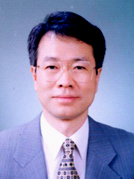 KAIST Professor Whang Turns VLDB Journal Into One of the Best in Its Field
Kyu-Young Whang, a Distinguished Professor at KAIST’s Computer Science Department, has developed The VLDB Journal into one of the world’s best journals on database technology.
Professor Whang, Editor-in-Chief of The VLDB Journal, is credited for the journal’s remarkable success evidenced by the rise of the publication’s Science Citation Index (SCI) impact factor from 3.818 to 6.8 in the period of one year. This placed the VLDB in the first place amongst 99 information systems journals and 44 hardware and architecture-related journals registered with the SCI. With only the exception of the Survey Journal, this makes The VLDB Journal the best in computer science.
The VLDB Journal is a quarterly journal published on behalf of the VLDB Endowment. The journal, launched in 1992, is dedicated to the publication of scholarly contributions to the advancement of information system architectures, the impact of technological advancements on information systems, and the development of novel database applications.
The VLDB Journal’s closest competitors in database technology, IEEE Transactions on Knowledge and Data Engineering and ACM Transactions on Database Systems, received an impact factor of 2.236 and 1.613 respectively. Comparatively, Professor Whang’s journal retains an impact factor nearly 3 to 4 times greater.
During Professor Whang’s six-year term as Editor-in-Chief, he has actively pursued the use of innovative ideas, strengthened the board of editors, standardized the length of review time, and made the journal much more accessible through the Internet. Furthermore, he drastically reduced publication time and sought a policy that focused more on the journal’s readers, which led to The VLDB Journal’s SCI impact factor rising from 1.149 (2002) to 6.8 (2008).
As one of The VLDB Journal’s founding members, Professor Whang has worked for the advancement of his journal tirelessly for 19 years with many accomplishments in database technology, including physical database design, determining the quality of a database, and the creation of a database management system. As a result, Professor Whang became the first IEEE fellow concerning domestic computer science. He is also a trustee of The VLDB Endowment, a fellow of the Korean Academy of Science and Technology, and of course, a Distinguished Professor at KAIST.
2009.07.16 View 14483
KAIST Professor Whang Turns VLDB Journal Into One of the Best in Its Field
Kyu-Young Whang, a Distinguished Professor at KAIST’s Computer Science Department, has developed The VLDB Journal into one of the world’s best journals on database technology.
Professor Whang, Editor-in-Chief of The VLDB Journal, is credited for the journal’s remarkable success evidenced by the rise of the publication’s Science Citation Index (SCI) impact factor from 3.818 to 6.8 in the period of one year. This placed the VLDB in the first place amongst 99 information systems journals and 44 hardware and architecture-related journals registered with the SCI. With only the exception of the Survey Journal, this makes The VLDB Journal the best in computer science.
The VLDB Journal is a quarterly journal published on behalf of the VLDB Endowment. The journal, launched in 1992, is dedicated to the publication of scholarly contributions to the advancement of information system architectures, the impact of technological advancements on information systems, and the development of novel database applications.
The VLDB Journal’s closest competitors in database technology, IEEE Transactions on Knowledge and Data Engineering and ACM Transactions on Database Systems, received an impact factor of 2.236 and 1.613 respectively. Comparatively, Professor Whang’s journal retains an impact factor nearly 3 to 4 times greater.
During Professor Whang’s six-year term as Editor-in-Chief, he has actively pursued the use of innovative ideas, strengthened the board of editors, standardized the length of review time, and made the journal much more accessible through the Internet. Furthermore, he drastically reduced publication time and sought a policy that focused more on the journal’s readers, which led to The VLDB Journal’s SCI impact factor rising from 1.149 (2002) to 6.8 (2008).
As one of The VLDB Journal’s founding members, Professor Whang has worked for the advancement of his journal tirelessly for 19 years with many accomplishments in database technology, including physical database design, determining the quality of a database, and the creation of a database management system. As a result, Professor Whang became the first IEEE fellow concerning domestic computer science. He is also a trustee of The VLDB Endowment, a fellow of the Korean Academy of Science and Technology, and of course, a Distinguished Professor at KAIST.
2009.07.16 View 14483 -
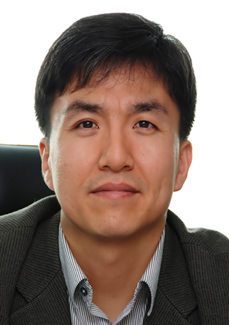 Prof. Cho Appointed Editor-in-Chief of Systems Biology Encyclopedia
Prof. Kwang-Hyun Cho of the Department of Bio and Brain Engineering, KAIST, has been appointed as the editor-in-chief of the Encyclopedia of Systems Biology which is currently in development by Springer, a New York-based publishing company, university authorities said on Monday (July 6).
Prof. Cho will share the position with three other eminent scholars from Britain, Germany and the United States. Cho will be responsible for selecting editorial members for each section of the Encyclopedia and overseeing the overall editorial process.
The Encyclopedia of Systems Biology is a multi-volume reference compilation of the research outcomes in the field of systems biology all over the world. The ESB will consist of alphabetically ordered description of systems biology concepts and is envisaged to ultimately comprise 6-12 volumes. Publication of the Encyclopedia is scheduled for 2011.
2009.07.08 View 13467
Prof. Cho Appointed Editor-in-Chief of Systems Biology Encyclopedia
Prof. Kwang-Hyun Cho of the Department of Bio and Brain Engineering, KAIST, has been appointed as the editor-in-chief of the Encyclopedia of Systems Biology which is currently in development by Springer, a New York-based publishing company, university authorities said on Monday (July 6).
Prof. Cho will share the position with three other eminent scholars from Britain, Germany and the United States. Cho will be responsible for selecting editorial members for each section of the Encyclopedia and overseeing the overall editorial process.
The Encyclopedia of Systems Biology is a multi-volume reference compilation of the research outcomes in the field of systems biology all over the world. The ESB will consist of alphabetically ordered description of systems biology concepts and is envisaged to ultimately comprise 6-12 volumes. Publication of the Encyclopedia is scheduled for 2011.
2009.07.08 View 13467 -
 KAIST to hold International Workshop on Flexible Displays
The 2009 KAIST International Workshop on Flexible Displays will take place at the Electrical Engineering Building on June 25, university sources said on Tuesday (June 23).
The workshop organized by the Center for Advanced Flexible Display Convergence (CAFDC) will explore the status and future vision of flexible and transparent plasma displays, which are among the key technologies for the development of the next-generation displays. There will be also discussions about technologies to realize the large-scale flexible and transparent display which is regarded as the display of the future.
Among the speakers are some of the most prominent figures in the field. Gary Eden from University of Illinois, Prof. Kunihide Tachibana from Kyoto University, and Carol Wedding, the president of Imaging Systems Tech., USA and several other well-known professors and engineers will participate in the workshop.
Professor Kyung-Cheol Choi, CAFDC chair, said: "The workshop will provide an excellent opportunity to examine the flexible and transparent plasma display technologies. It will also be a good chance to explore large-scale flexible and transparent displays from various technical viewpoints."
2009.06.24 View 18582
KAIST to hold International Workshop on Flexible Displays
The 2009 KAIST International Workshop on Flexible Displays will take place at the Electrical Engineering Building on June 25, university sources said on Tuesday (June 23).
The workshop organized by the Center for Advanced Flexible Display Convergence (CAFDC) will explore the status and future vision of flexible and transparent plasma displays, which are among the key technologies for the development of the next-generation displays. There will be also discussions about technologies to realize the large-scale flexible and transparent display which is regarded as the display of the future.
Among the speakers are some of the most prominent figures in the field. Gary Eden from University of Illinois, Prof. Kunihide Tachibana from Kyoto University, and Carol Wedding, the president of Imaging Systems Tech., USA and several other well-known professors and engineers will participate in the workshop.
Professor Kyung-Cheol Choi, CAFDC chair, said: "The workshop will provide an excellent opportunity to examine the flexible and transparent plasma display technologies. It will also be a good chance to explore large-scale flexible and transparent displays from various technical viewpoints."
2009.06.24 View 18582 -
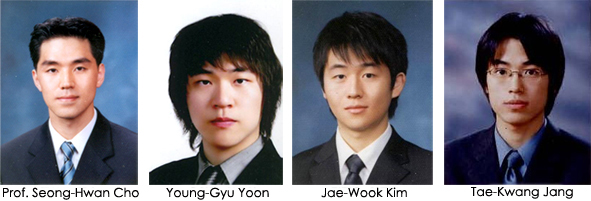 Prof. Cho's Team Awarded Best Paper Prize by IEEE
A team led by Prof. Seong-Hwan Cho of the School of Electrical Engineering and Computer Science, KAIST, won the 2009 Guillemin-Cauer Best Paper Award for their paper published in the IEEE Transactions on Circuits and Systems Journal last May, university authorities said on Thursday (June 4).
The team"s paper was entitled "A Time-based Bandpass ADC Using Time-Interleaved Voltage-Controlled Oscillators." The prize is given to a paper regarded as the best among about 350 papers published in the prestigious journal in the circuit theory area. Co-recipients of the award are Young-Gyu Yoon, Jae-Wook Kim and Tae-Kwang Jang. The award was presented at the annual 2009 International Symposium for Circuits and Systems in Taipei, Taiwan, on May 26.
The Institute of Electrical and Electronics Engineers or IEEE is an international non-profit, professional organization for the advancement of technology related to electricity. The New York-based organization has more than 365,000 members in about 150 countries making it the largest technical professional organization in the world.
2009.06.05 View 14045
Prof. Cho's Team Awarded Best Paper Prize by IEEE
A team led by Prof. Seong-Hwan Cho of the School of Electrical Engineering and Computer Science, KAIST, won the 2009 Guillemin-Cauer Best Paper Award for their paper published in the IEEE Transactions on Circuits and Systems Journal last May, university authorities said on Thursday (June 4).
The team"s paper was entitled "A Time-based Bandpass ADC Using Time-Interleaved Voltage-Controlled Oscillators." The prize is given to a paper regarded as the best among about 350 papers published in the prestigious journal in the circuit theory area. Co-recipients of the award are Young-Gyu Yoon, Jae-Wook Kim and Tae-Kwang Jang. The award was presented at the annual 2009 International Symposium for Circuits and Systems in Taipei, Taiwan, on May 26.
The Institute of Electrical and Electronics Engineers or IEEE is an international non-profit, professional organization for the advancement of technology related to electricity. The New York-based organization has more than 365,000 members in about 150 countries making it the largest technical professional organization in the world.
2009.06.05 View 14045 -
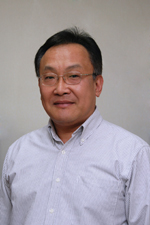 KAIST Prof. Park Selected as Winner of Clemson Award
Professor Tae-Gwan Park of the Department of Biological Sciences, KAIST, was chosen as the winner of the 2009 Clemson Award for Fundamental Research, university authorities said on Tuesday (April 7).
The award is the highest recognition of the Society for Biomaterials, an international organization of more than 3,000 members that promotes research in the field of biomaterials. Prof. Park is cited for his outstanding achievements in interdisciplinary research covering gene transferring, gene therapy and neogenesis. It is rare for a non-U.S. national to win the prize in the 36-year history of the award.
The award will be given to Professor Park at the Annual Meeting of the society which will be held in San Antonio, Texas, on April 22.
2009.04.09 View 12812
KAIST Prof. Park Selected as Winner of Clemson Award
Professor Tae-Gwan Park of the Department of Biological Sciences, KAIST, was chosen as the winner of the 2009 Clemson Award for Fundamental Research, university authorities said on Tuesday (April 7).
The award is the highest recognition of the Society for Biomaterials, an international organization of more than 3,000 members that promotes research in the field of biomaterials. Prof. Park is cited for his outstanding achievements in interdisciplinary research covering gene transferring, gene therapy and neogenesis. It is rare for a non-U.S. national to win the prize in the 36-year history of the award.
The award will be given to Professor Park at the Annual Meeting of the society which will be held in San Antonio, Texas, on April 22.
2009.04.09 View 12812 -
 Workshop on Biomedical IC to Be Held on March 26
KAIST will hold a workshop on "biomedical IC for future healthcare system" on March 26 at a lecture room of the School of Electrical Engineering & Computer Science. The workshop is organized by SEECS and the Korean Institute of Next Generation Computing.
At the workshop, a variety of new technologies expected to expedite the development of biomedical systems will be presented. KAIST Prof. Hoi-Jun Yoo will speak on the "body channel communication" using the human body as the signal transmission medium and Dr. Seung-Hwan Kim of Electronics and Telecommunications Research Institute (ETRI) on a wearable vital sign monitoring system.
Other subjects are CMOS (complementary metal-oxide semiconductor) fully electronic biosensor for biomolecular detection to be presented by KAIST Prof. Gyu-Hyeong Cho; nerve interface and IC (integrated circuit) system design by KAIST Prof. Yoon-gi Nam; design of neural recording and stimulation IC using time-varying magnetic field by KAIST Prof. Seong-Hwan Cho; low power multi-core digital signal processor for hearing aid by Dong-Wook Kim, senior researcher at the Samsung Advanced Institute of Technology; and a non-contact cardiac sensor by KAIST Prof. Seung-Chul Hong.
With the advent of the ageing society, medical expenses of the elderly people are rapidly increasing. As a way to address the issue, interests are growing in "ubiquitous healthcare," a technology that uses a large number of environmental and patient sensors and actuators to monitor and improve patients’ physical and mental condition.
The upcoming workshop is the first academic event on biomedical integrated chips to be held in Korea. The workshop will provide a valuable opportunity for experts in biomedical area to get together and examine the present status of Korean biomedical area and discuss about its future, KAIST officials said.
2009.03.20 View 18463
Workshop on Biomedical IC to Be Held on March 26
KAIST will hold a workshop on "biomedical IC for future healthcare system" on March 26 at a lecture room of the School of Electrical Engineering & Computer Science. The workshop is organized by SEECS and the Korean Institute of Next Generation Computing.
At the workshop, a variety of new technologies expected to expedite the development of biomedical systems will be presented. KAIST Prof. Hoi-Jun Yoo will speak on the "body channel communication" using the human body as the signal transmission medium and Dr. Seung-Hwan Kim of Electronics and Telecommunications Research Institute (ETRI) on a wearable vital sign monitoring system.
Other subjects are CMOS (complementary metal-oxide semiconductor) fully electronic biosensor for biomolecular detection to be presented by KAIST Prof. Gyu-Hyeong Cho; nerve interface and IC (integrated circuit) system design by KAIST Prof. Yoon-gi Nam; design of neural recording and stimulation IC using time-varying magnetic field by KAIST Prof. Seong-Hwan Cho; low power multi-core digital signal processor for hearing aid by Dong-Wook Kim, senior researcher at the Samsung Advanced Institute of Technology; and a non-contact cardiac sensor by KAIST Prof. Seung-Chul Hong.
With the advent of the ageing society, medical expenses of the elderly people are rapidly increasing. As a way to address the issue, interests are growing in "ubiquitous healthcare," a technology that uses a large number of environmental and patient sensors and actuators to monitor and improve patients’ physical and mental condition.
The upcoming workshop is the first academic event on biomedical integrated chips to be held in Korea. The workshop will provide a valuable opportunity for experts in biomedical area to get together and examine the present status of Korean biomedical area and discuss about its future, KAIST officials said.
2009.03.20 View 18463 -
 Prof. Seong Publishes English Book on Reliability in Digital Control Systems
Prof. Poong-Hyun Seong of Department of Nuclear and Quantum Engineering has recently published an English-language book on reliability and risk issues in large scale safety-critical digital control systems used in complex facilities such as nuclear power plants.
The book entitled “Reliability and Risk Issues in Large Scale Safety-critical Digital Control Systems” is a result of Prof. Seong’s collaboration with some KAIST graduates who used to be under his guidance. The 303-page publication has been published by Springer, one of the world’s leading publishers of academic journals, as part of the Springer Series in Reliability Engineering.
The book consists of four parts; part I deals with issues related to hardware, part II software, part III human factors and finally the last part integrated systems. It can be purchased through some on-line book stores such as Amazon.com.
Prof. Seong served as an editor-in-chief for Nuclear Engineering and Technology (NET), an international journal of Korean Nuclear Society (KNS), from 2003 to 2008. He also worked as a chair of the Human Factors Division (HFD) of American Nuclear Society (ANS) from 2006 to 2007. Prof. Seong is now a commissioner of Korea Nuclear Safety Commission which is the nation’s highest committee on Nuclear Safety.
2008.12.26 View 16890
Prof. Seong Publishes English Book on Reliability in Digital Control Systems
Prof. Poong-Hyun Seong of Department of Nuclear and Quantum Engineering has recently published an English-language book on reliability and risk issues in large scale safety-critical digital control systems used in complex facilities such as nuclear power plants.
The book entitled “Reliability and Risk Issues in Large Scale Safety-critical Digital Control Systems” is a result of Prof. Seong’s collaboration with some KAIST graduates who used to be under his guidance. The 303-page publication has been published by Springer, one of the world’s leading publishers of academic journals, as part of the Springer Series in Reliability Engineering.
The book consists of four parts; part I deals with issues related to hardware, part II software, part III human factors and finally the last part integrated systems. It can be purchased through some on-line book stores such as Amazon.com.
Prof. Seong served as an editor-in-chief for Nuclear Engineering and Technology (NET), an international journal of Korean Nuclear Society (KNS), from 2003 to 2008. He also worked as a chair of the Human Factors Division (HFD) of American Nuclear Society (ANS) from 2006 to 2007. Prof. Seong is now a commissioner of Korea Nuclear Safety Commission which is the nation’s highest committee on Nuclear Safety.
2008.12.26 View 16890 -
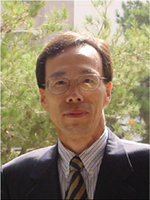 KAIST Research Team Unveils Method to Fabricate Photonic Janus Balls
A research team led by Prof. Seung-Man Yang of the Department of Chemical and Biomolecular Engineering has found a method to fabricate photonic Janus balls with isotropic structural colors.
The finding draws attention since the newly-fabricated photonic balls may prove useful pigments for the realization of e-paper or flexible electronic displays.
The breakthrough was published in the Nov. 3 edition of the science journal "Advanced Materials." The Nov. 6 issue of "Nature" also featured it as one of the research highlights under the title of "Future Pixels."
Prof. Yang"s research team found that tiny marbles, black on one side and colored on the other, can be made by "curing" suspensions of silica particles with an ultraviolet lamp. When an electric field is applied, the marbles line up so that the black sides all face upwards, which suggests they may prove useful pigments for flexible electronic displays.
The researchers suspended a flow of carbon-black particles mixed with silica and a transparent or colored silica flow in a resin that polymerizes under ultraviolet light. They then passed the mixture through a tiny see-through tube. The light solidified the silica and resin as balls with differently colored regions, each about 200 micrometers in diameter.
Over the last decades, the development of industrial platforms to artificially fabricate structural color pigments has been a pressing issue in the research areas of materials science and optics. Prof. Yang, who is also the director of the National Creative Research Initiative Center for Integrated Optofluidic Systems, has led the researches focused on fabrication of functional nano-materials through the process of assembling nano-building blocks into designed patterns.
The "complementary hybridization of optical and fluidic devices for integrated optofluidic systems" research was supported by a grant from the Creative Research Initiative Program of the Ministry of Education, Science & Technology.
2008.11.12 View 14490
KAIST Research Team Unveils Method to Fabricate Photonic Janus Balls
A research team led by Prof. Seung-Man Yang of the Department of Chemical and Biomolecular Engineering has found a method to fabricate photonic Janus balls with isotropic structural colors.
The finding draws attention since the newly-fabricated photonic balls may prove useful pigments for the realization of e-paper or flexible electronic displays.
The breakthrough was published in the Nov. 3 edition of the science journal "Advanced Materials." The Nov. 6 issue of "Nature" also featured it as one of the research highlights under the title of "Future Pixels."
Prof. Yang"s research team found that tiny marbles, black on one side and colored on the other, can be made by "curing" suspensions of silica particles with an ultraviolet lamp. When an electric field is applied, the marbles line up so that the black sides all face upwards, which suggests they may prove useful pigments for flexible electronic displays.
The researchers suspended a flow of carbon-black particles mixed with silica and a transparent or colored silica flow in a resin that polymerizes under ultraviolet light. They then passed the mixture through a tiny see-through tube. The light solidified the silica and resin as balls with differently colored regions, each about 200 micrometers in diameter.
Over the last decades, the development of industrial platforms to artificially fabricate structural color pigments has been a pressing issue in the research areas of materials science and optics. Prof. Yang, who is also the director of the National Creative Research Initiative Center for Integrated Optofluidic Systems, has led the researches focused on fabrication of functional nano-materials through the process of assembling nano-building blocks into designed patterns.
The "complementary hybridization of optical and fluidic devices for integrated optofluidic systems" research was supported by a grant from the Creative Research Initiative Program of the Ministry of Education, Science & Technology.
2008.11.12 View 14490 -
 Prof. Sang-Yup Lee Receives Merck Award for Metabolic Engineering
Prof. Sang-Yup Lee of KAIST"s Department of Chemical and Biomolecular Engineering has been chosen as the winner of the 2008 Merck Award for Metabol;ic Engineering established by the world"s leading pharmaceutical and chemical company Merck, KAIST officials said Tuesday, Sept. 16.
The Distinguished Professor of KAIST and LG Chem Chair Professor will receive the award on Sept. 18 during the 7th Metabolic Engineering convention now underway at Puerto Vallarta, Mexico. Prof. Lee will give a commemorative lecture, titled "Systems Metabolic Engineering for Chemicals," at the biannual academic conference. Prof. Lee is the fourth to win the coveted award which is given to the world"s top expert in metabolic engineering with outstanding achievements in the field.
Prof. Lee, 44, who graduated from Seoul National University and earned his master"s and doctoral degrees in chemical engineering from Northwestern University of the United States, is now the dean of the College of Life Science and Bioengineering, KAIST. Since 1994, he has served as the head of the Metabolic and Biomolecular Engineering National Research Laboratory, director of the BioProcess Engineering Center, Director of the Bioinformatics Research Center and Co-Director of the Institute for the BioCentury in KAIST.
Prof. Lee said he was receiving the Merck award "as a representative of KAIST graduates, students and researchers" who have worked with him at the Metabolic Engineering Lab. He added he was happy to see the outcome of bioengineering development projects supported by the Ministry of Education, Science and Technology over the past years was now being recognized by the world"s leading scientific society with the Merck Award.
Metabolic engineering, the art of optimizing genetic and regulatory processes within cells to increase the cell"s production of a certain substance, develops technologies that hold the key to the resolution of the world"s energy, food and environmental problems. The indispensible technology in bioengineering can be applied to the production of biomass to obtain alternative fuel.
Prof. Lee has actively participated in publishing such academic periodicals as Biotechnology Journal (as chief editor), Biotechnology and Bioengineering (deputy editor) and Metabolic Engineering (a member of the editorial committee).
2008.09.17 View 15548
Prof. Sang-Yup Lee Receives Merck Award for Metabolic Engineering
Prof. Sang-Yup Lee of KAIST"s Department of Chemical and Biomolecular Engineering has been chosen as the winner of the 2008 Merck Award for Metabol;ic Engineering established by the world"s leading pharmaceutical and chemical company Merck, KAIST officials said Tuesday, Sept. 16.
The Distinguished Professor of KAIST and LG Chem Chair Professor will receive the award on Sept. 18 during the 7th Metabolic Engineering convention now underway at Puerto Vallarta, Mexico. Prof. Lee will give a commemorative lecture, titled "Systems Metabolic Engineering for Chemicals," at the biannual academic conference. Prof. Lee is the fourth to win the coveted award which is given to the world"s top expert in metabolic engineering with outstanding achievements in the field.
Prof. Lee, 44, who graduated from Seoul National University and earned his master"s and doctoral degrees in chemical engineering from Northwestern University of the United States, is now the dean of the College of Life Science and Bioengineering, KAIST. Since 1994, he has served as the head of the Metabolic and Biomolecular Engineering National Research Laboratory, director of the BioProcess Engineering Center, Director of the Bioinformatics Research Center and Co-Director of the Institute for the BioCentury in KAIST.
Prof. Lee said he was receiving the Merck award "as a representative of KAIST graduates, students and researchers" who have worked with him at the Metabolic Engineering Lab. He added he was happy to see the outcome of bioengineering development projects supported by the Ministry of Education, Science and Technology over the past years was now being recognized by the world"s leading scientific society with the Merck Award.
Metabolic engineering, the art of optimizing genetic and regulatory processes within cells to increase the cell"s production of a certain substance, develops technologies that hold the key to the resolution of the world"s energy, food and environmental problems. The indispensible technology in bioengineering can be applied to the production of biomass to obtain alternative fuel.
Prof. Lee has actively participated in publishing such academic periodicals as Biotechnology Journal (as chief editor), Biotechnology and Bioengineering (deputy editor) and Metabolic Engineering (a member of the editorial committee).
2008.09.17 View 15548